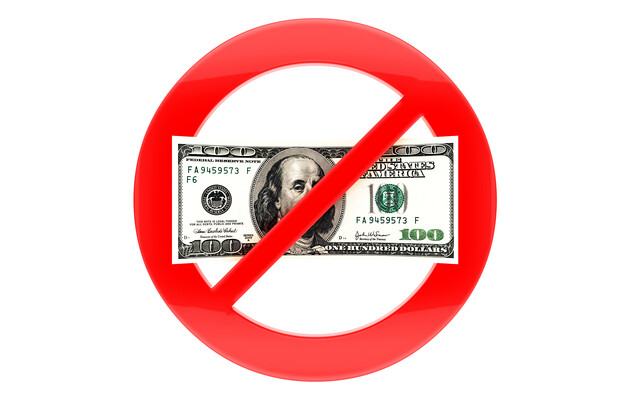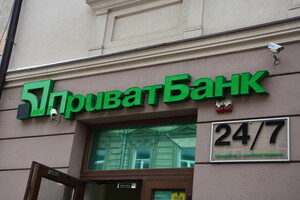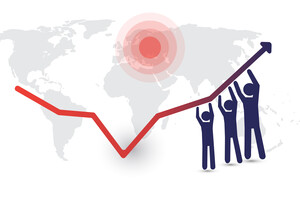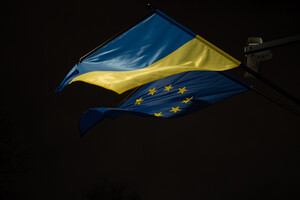A Plan of Escape from the dollar
It's simple, we will create our own currency and then none of our transactions will be controlled by the West, no sanctions will block our monetary assets, and the strength of our reserves will not depend on the dollar. The BRICS countries (Brazil, Russia, India, China and South Africa) have such a plan. In addition, these are no longer purely theoretical considerations, which will certainly have a global impact, since the BRICS countries are populated by more than three billion people, accounting for a quarter of the world's GDP and 16% of the world trade.
"Serious countries that respect themselves understand well what is at stake, see the incompetence of the "masters" of the current international monetary and financial system and want to create their own mechanisms for ensuring sustainable development, which will be protected from external dictates," said the Russian Foreign Minister Sergey Lavrov, announcing that as soon as in August of this year, the BRICS countries will discuss the future common currency in detail at a summit in South Africa. However, all these statements can only be called coquetry, since the transition to the BRICS common currency has been going on since at least 2010, and the level of readiness of the project is far from the "they want to create mechanisms" stage.
What has already been done
Already at the end of the first BRICS summit in 2009, a joint statement said that "there is an urgent need for a stable, predictable and more diversified international monetary system." After that, all subsequent BRICS summit discussed the issue of the common financial future. The motives are clear: it is an attempt to avoid growing financial control and sanctions, strengthening international influence, and simply promoting trade cooperation, primarily with the large markets of China, the Russian Federation, and India.
In October 2011, the stock exchanges in the BRICS countries made an alliance and started working together on the wider use of local currencies in these stock markets.
In 2013, the New Development Bank (NDB) was established, and in 2014, the Contingent Reserve Agreement (CRA) was signed. These are kind of analogues of the World Bank and the IMF, but with the use of local BRICS currencies and much more loyal requirements for borrowers.
By 2022, all BRICS countries, except South Africa, have developed their own independent national payment systems, similar to the SWIFT global banking network, and independent retail bank card networks, so as not to depend on the American Visa and Mastercard. There was also an ambition to create a joint payment system – BRICS Pay.
"Connecting these national payment systems to an alternative cross-border payment system would allow the entire life cycle of payments to be carried out while entirely bypassing the US dollar-denominated global system," said Zongyuan Zoe Liu, a research fellow at the Council on Foreign Relations (CFR), who has devoted a separate study to de-dollarization policy of BRICS.
She notes that the BRICS Pay system is a very ambitious step. It is the only contactless payment system that connects BRICS national payment systems with an integrated payment platform.
"Currently, external settlements between BRICS members still require a conversion into US dollars, which requires the engagement of US banks, - Zongyuan Zoe Liu notes – Through BRICS Pay, the conversion to US dollar and US banks would no longer be necessary ... The BRICS Pay system will also allow the members to reduce their dependence on international payment organizations such as SWIFT, Visa and Mastercard."
BRICS Pay is the traditional way, but non-traditional paths are also being paved, for example, using the blockchain technology to create a BRICS digital currency. The first conversations about this began in 2017, in 2018 a cooperation agreement was signed, and in 2019 it was stated that the future digital currency should become an integral part of BRICS Pay.
The German economist Philipp Bagus, known for his skepticism about the Eurozone, believes, for example, that it is impossible for the countries to agree on a common fiat, that is, classical currency, and therefore non-classical options will work.
"A common currency has an important problem, namely: how are the profits from the creation of new money distributed? This is the main problem of the euro. It will be fair for BRICS as well. Who will actually control the creation of money and the distribution of the profits from it? In fact, I do not see a solution here, I do not see the viability of such a currency, if we are talking about fiat, - emphasizes Mr. Bagus in a comment for ZN.UA. "Thus, if this initiative happens to have any real implementation, then, most likely, it will be alternative currencies."
However, according to the expert, it does not necessarily have to be digital money, it can also be a so-called commodity currency, that is, money tied to the export of certain raw materials. For example, the Brazilian real, the Russian ruble, or the South African real are just such currencies. "A commodity currency backed by one or more goods is a possible way out for them, since, as a rule, such currencies are tied precisely to the export of raw materials. Considering the countries in question, the advantage of such an option would be much faster rates of economic growth in the BRICS countries than in the West," says Mr. Bagus.
What's ahead
A significant path has already been taken, but there is a huge gap between "we gave up the dollar" and "we created a replacement for the dollar". For such a significant transition, at least more allies are needed.
Recruitment of new members of the anti-dollar coalition is in progress. In 2015, representatives of the Eurasian Economic Union (Belarus, Kazakhstan, Armenia, Kyrgyzstan) and the Shanghai Cooperation Organization (in addition to the aforementioned, Tajikistan, Uzbekistan and Pakistan) were invited to the BRICS summit. The leaders of Egypt, Guinea, Mexico and Thailand visited the 2017 summit. As a result, the informal BRICS+ institution emerged, which already has 18 states, and this is a much wider platform for the implementation of any joint initiatives. However, quantity is not quality.
First of all, the real capabilities of NDB still cannot be compared with their dollar counterparts (World or Asian banks, for example) — in fact, the bank still issues only a little more than half of its loans in national currencies. The CRA can replace the IMF only in Putin's dreams, since this institution is dependent on the IMF. After all, it can issue only 30% of loans on demand, and in order to issue the remaining 70%, the consent of the hated International Monetary Fund is required. Therefore, the status of a creditor such as the IMF and the CRA, which represent the last hope for those who are going to take a loan, is not possible even in the medium term. In addition, NDB and CRA clients include more countries that are not in the best economic shape, so all these shortcomings will be more obvious.
Secondly, the capabilities of the participating countries are not the same, it is China and the Russian Federation that can afford the rapid (albeit conditionally) development of alternative financial instruments and infrastructure, but what about the others? Attracting Tajiks and Guineas in practice is an anchor, not a sail, and the financial infrastructure is too complex and extensive a system to be simply gifted to the new members as a sign of respect.
Thirdly, the current unanimity of countries is not a constant. The dominant role of China and Russia, as well as their personal interest in these processes, is obvious, but does it suit everyone? The issue of choosing a common currency will actually be the first apple of discord.
The digital yuan is unlikely to suit India or Brazil. Interest in the ruble could be seen when the Russian Federation tried to convert payments for oil and gas into the ruble. In the end, Gazprombank accepted payments, as before, and only then used them to buy rubles. A commodity currency should be tied to raw materials, but to which? For the Russian Federation and Brazil it is oil, for India it is agricultural produce, for South Africa it is minerals and diamonds. In addition, China has not been exporting raw materials for a long time, machinery and equipment account for 60% of its valuable exports, and a commodity currency for it is something from the last century. A common currency like the euro will not actually be beneficial to the stronger members of the collaboration, because at the slightest crisis they will have to support weaker comrades at the expense of their own economic stability. Recall the relationship between the EU and Greece in 2010-2015. Who then gave the most money to save the Greeks, Germany and France, as always? There must be very good political reasons to neglect economic benefits so much.
So the next stages are unlikely to be as fast and "unanimous" as the previous ones, at least because before the final victory, the countries should get rid of their dollar assets. After all, if their ambitious offensive succeeds, the dollar will become cheaper, and all dollar assets will depreciate. Only Russia was actively and purposefully engaged in this, starting in 2013, and, as we know, it did not have the time to implement this system before the sanctions in 2022 - there were still 96 billion of the total sum blocked in dollars. Therefore, other countries will also have to spend years implementing this mechanism.
Until then, de-dollarization will presume the displacement of the dollar from bilateral trade of these countries. The dollar is very upset, but let's look at the Russian Federation, which is already literally drowning in yuan. Where should they go, if at all, Russia has never been a significant trading partner for China, and its share in Chinese exports and imports was as much as 2 and 3%, respectively? Of course, the Russian Federation will increase and deepen cooperation with China, settle accounts with other Asian countries, it has already started issuing domestic loans in yuans. However, this is a process that takes years. Even though the yuan is a world reserve currency, it is not freely convertible and is directly dependent on the Chinese policy. Thus, the Russian Federation will still depend on the international market. For example, now, since the PRC still adheres to sanctions, Chinese banks do not accept payments from sanctioned Russian banks, even in yuans. That is, do with them what you want. However, when did de-dollarization become yuanization? It's like running away from Mangiafuoko to Karabas Barabas.
Please select it with the mouse and press Ctrl+Enter or Submit a bug















 Login with Google
Login with Google